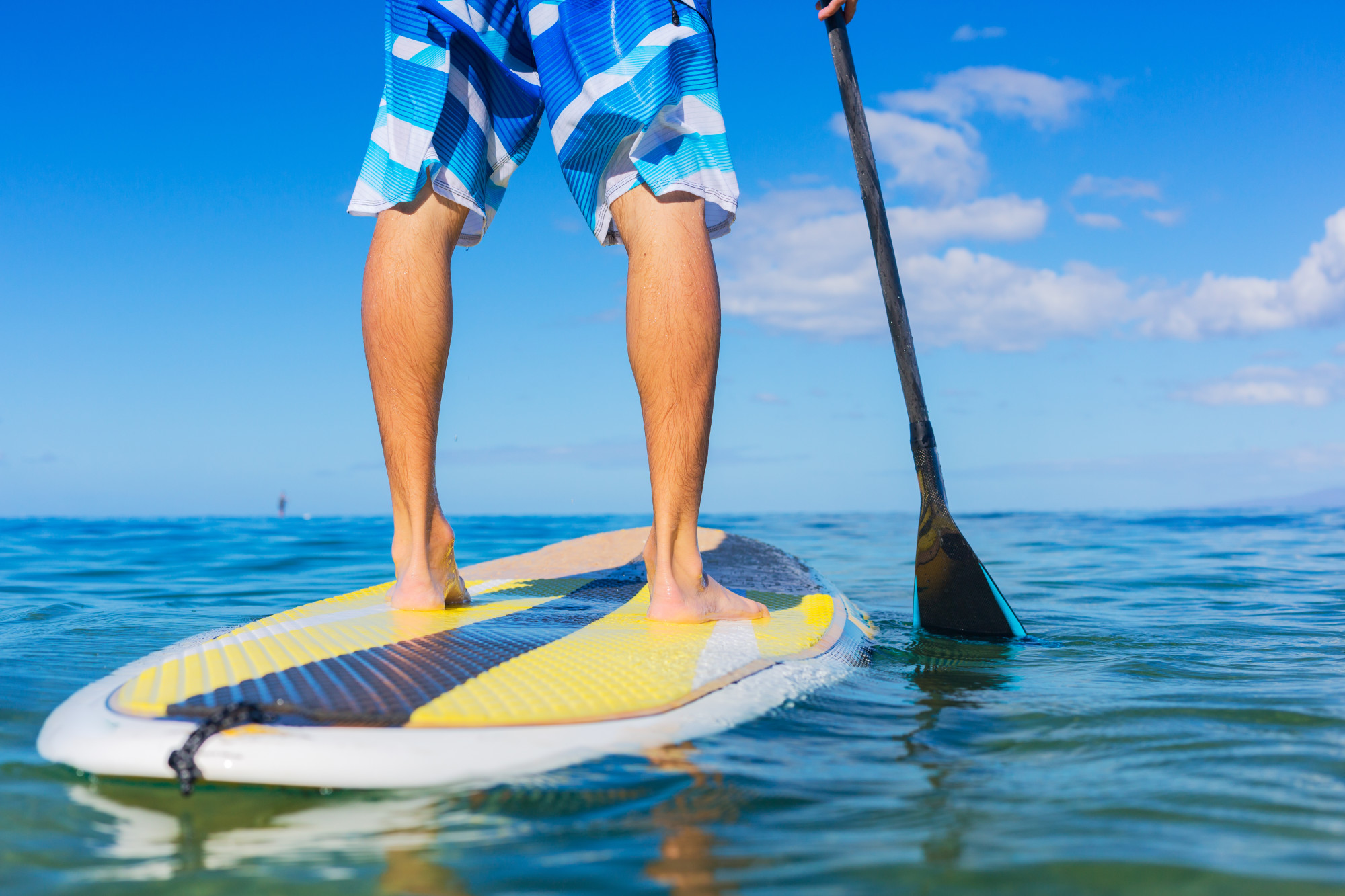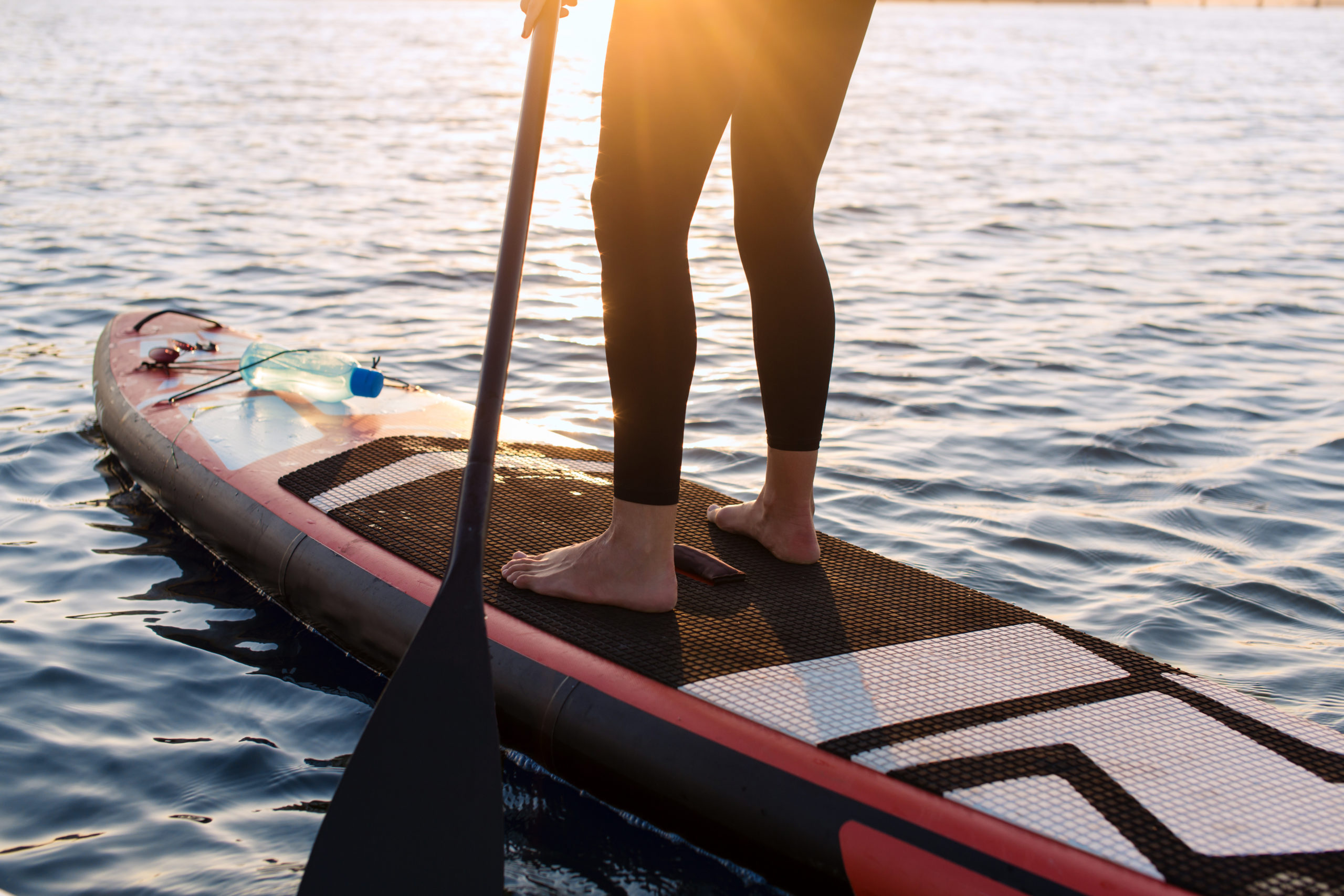


Stand up paddle boarding is a fun way to enjoy the beauty of any waterway. It also offers an intense workout. It is important to understand the basics behind stand up paddle boarding before getting started for your safety and enjoyment. Continue reading below to learn more about how to stand up paddle board.
When considering how to stand up paddle board, it is fairly obvious that a stand up paddle board will be needed. It is possible to rent these boards from many rental or surf shops when first starting out. There are various boards available for purchase that are dependent upon your weight and your level of skill, as well as where and how you will be using it.
The second most important equipment in considering how to stand up paddle board is the paddle. The paddle is available to assist you in moving and paddling. It should reach your wrist when your arms are raised above your head and when standing on the board.
A personal flotation device, more commonly known as a life vest or life jacket, is essential to your safety when stand up paddle boarding. Since the board is considered a water vessel, the U.S. Coast Guard requires that all passengers have access to a personal flotation device. Children must wear one at all times when on the board, while adults just have to have the personal flotation device accessible. It is also important to note that the U.S. Coast Guard requires paddlers to have a whistle to warn other boats and a light if you are paddling after sunset.
If it is warm outside, it is appropriate to wear swimwear when stand up paddle boarding. Some individuals will wear a rash guard to protect themselves from the sun. It is important to apply sunscreen to all areas of your body that are not covered, including sunglasses for the eyes, to ensure protection from the sun. If it is cool outside, it would be more appropriate to wear a wet suit to protect from hypothermia.
A leash is a tether between the board and you. At times, they do come with the board, but in most cases, leashes have to be bought separately. Be sure that the right type of leash is bought, dependent upon what types of bodies of water you will be utilizing the board in. Options include leashes for the surf, for flat waterways and for rivers.
Learning how to stand up on the board is the first and most essential step. Stand next to the board in shallow water and try to get on the board by holding on to it and getting on in a kneeling stance. Be sure you are at the center of the board which is indicated by the handle. Slowly move your feet to a standing position, one at a time. Keep your knees bent while rising your chest and slowly bring your legs straight.
After you have successfully stood up, you have to keep your balance. Ensure that your feet are on the center of the board and are exactly next to each other in a parallel fashion. Your feet should consistently point forward and your back should remain straight, including the shoulders and neck. Utilize your hips in weight distribution by keeping your knees slightly bent and focus on the view rather than your feet.
Ensure that the blade points away from you. The blade should point at the front of the board. Your hands should be opposite to what you are paddling. For example, if you are paddling to the right, have your left hand on top and your right hand down the shaft of the paddle.
Falling will be inevitable when learning how to stand up paddle board, but always ensure you are aimed toward the water to avoid injuries. Hold on to the paddle, using the board to retrieve it if necessary. Slide yourself back on to the board by back kicking in the water and holding on to the center handle.
This stroke, as its name says, moves your forward. The blade should be pushed to the surface of the water and back down. Pull the board past the paddle, and alternate strokes throughout. Try to keep the paddle as vertical as possible to maintain a straight line.
The reverse stroke should be used for stopping, turning or slowing your speed. Plant the paddle near the back, pulling the board to the opposite side it is planted on. Be sure to move from your torso to keep balance and a firm grip.
If you are still in the water and need to turn, you can use the sweep stroke. The paddle should go completely in the water by reaching forward. Sweep the entire paddle in an arch motion from the front to the back, utilizing the turn of your torso. The board will go in the opposite direction of the sweep.
Learning how to stand up paddle board can bring you a knew and exciting water sport to entertain. Try to start where the water is calm and there is no wind to ensure an easier experience, make sure there is a shallow area as well. Do not start alone, and ensure you always have a friend with you at first to ensure your safety. Stand up paddle boarding is truly an exciting and fun sport once you get the hang of it.